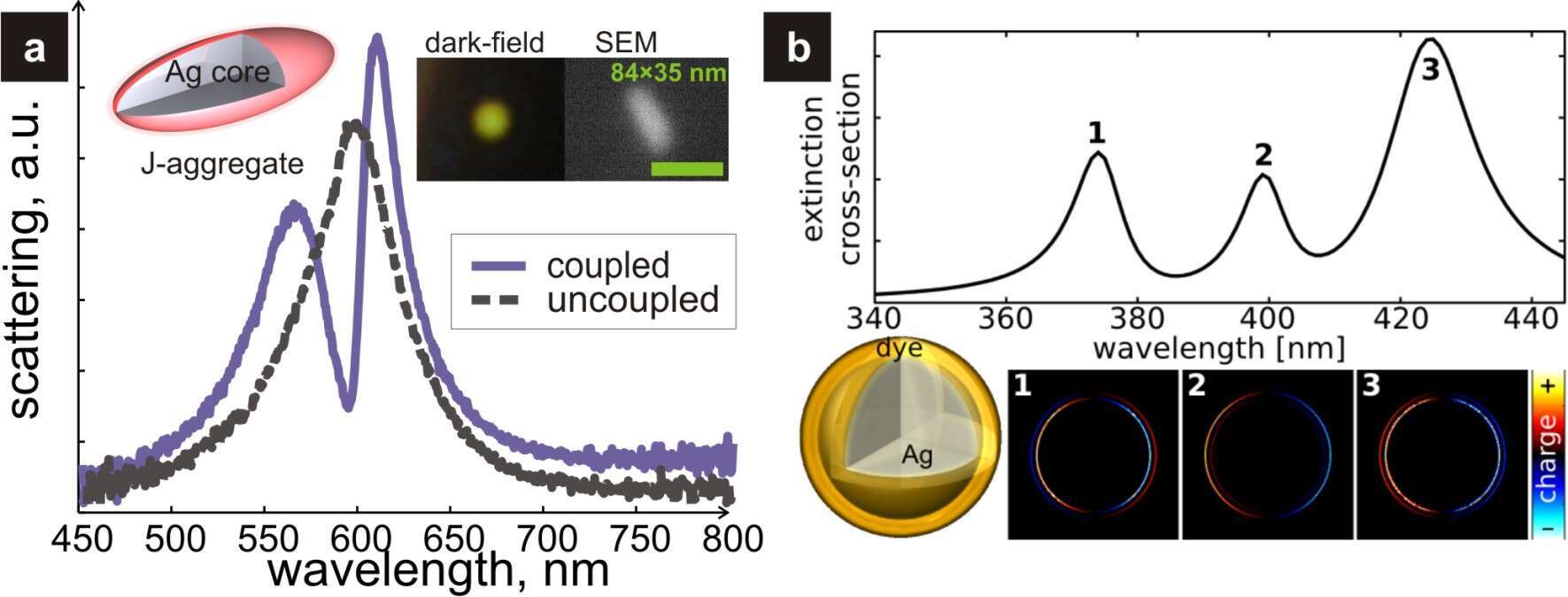
Strong Coupling between Individual Plasmonic Nanoparticles and Molecular Excitons
Strong light-matter interactions have been traditionally studied in atomic and solid state systems within various cavity-emitter configurations. Most experiments have been performed at cryogenic temperatures and in vacuum to ensure sufficiently low dephasing rates.
Here, we show that similar observations can be made at room temperature using plasmonic cavities and molecular excitons. In particular, we have studied nanoparticle plasmons coupled to molecular J-aggregates on a single nanoparticle level. For the case of silver nanorods (Fig. 1a) strong suppression of scattering have been observed in the vicinity of the molecular resonance – signalling strong plasmon-exciton interactions. Upon photo-degradation of chromophores upon laser illumination, a recovery to a single peaked plasmon resonance of a nanorod occurred. We have studied the behaviour of such system as a function of nanorods` dimensions and found that for smaller rods the interaction was approaching the strong coupling limit due to efficient suppression of radiative damping.

Figure 1. a) A single silver nanorod – TDBC J-aggregate plasmon-exciton hybrid studied before and after the molecules have been photobleached [1]. b) Theoretically studied plasmon-exciton interactions in core-shell geometry. In high oscillator strength limit – 3-peaked spectrum in scattering, extinction and absorption emerges [2].
These findings have been further confirmed by numerical simulations, which showed emergence of transparency dips not only in scattering but also in absorption and extinction of a single nanoparticle [1, 2]. Extensive simulations using Mie theory, FDTD and analytical covered spheroid model have revealed that (i) spectral dips in scattering spectra and mode anti-crossing cannot be used as undisputable argument of strong coupling, but rather it should be dips and anti-crossing in absorption and (ii) in the limit of high oscillator strength 3-peaked spectra emerge as a result of the core-shell structure resonating as a whole (Fig. 1b).
References:
- Zengin, G., et al., Approaching the strong coupling limit in single plasmonic nanorods interacting with J-aggregates. Sci. Rep., 3, 3074, (2013).
- Antosiewicz, T.J., S.P. Apell, and T. Shegai, Plasmon–Exciton Interactions in a Core–Shell Geometry: From Enhanced Absorption to Strong Coupling. ACS Photonics, 1, 454-463, (2014).
timurs@chalmers.se
Powered by Eventact EMS